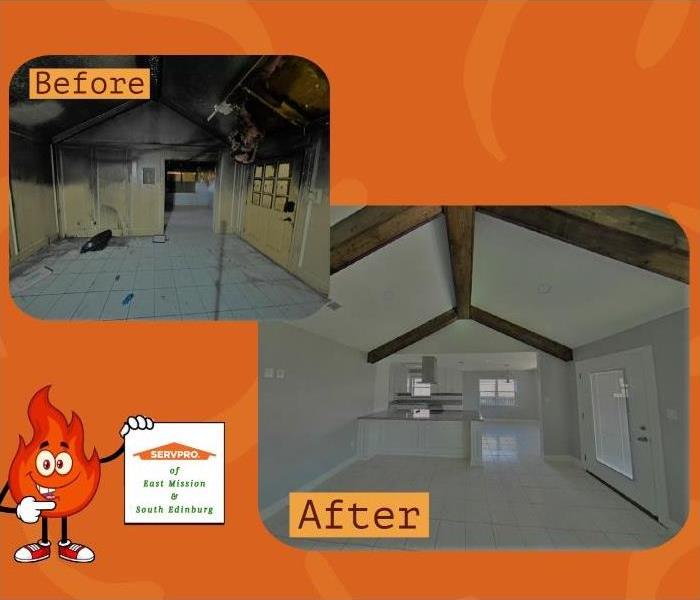Common Types of Fire Sprinklers 101
2/8/2022 (Permalink)
 BEFORE & AFTER SERVPRO helped this home with the clean-up and restoration process, "Like it never even happened."
BEFORE & AFTER SERVPRO helped this home with the clean-up and restoration process, "Like it never even happened."
DID YOU KNOW!? According to the National Fire Protection Association, there’s a new structure fire every 63 seconds! Research by the NFPA concluded that sprinklers were effective at controlling fire in 96 percent of fires in which they operated.
The way that we see it is that it’s important to work with your fire protection contractor to fully understand how your system works and how to keep it properly maintained. Building owners often incorrectly think the fire sprinkler contractor will manage their system for them.
Without understanding your building’s sprinkler system, your building could be at risk of a large fire loss, and with that being said let’s talk about the Common Types of Fire Sprinkler Systems:
Wet Pipe Systems – Wet pipe sprinkler systems are the most common. When heat activates a sprinkler head, pressurized water stored in the pipes is released. Each sprinkler head is activated individually, which can help reduce water damage in the event of a false alarm.
Dry Pipe Systems – Dry pipe sprinkler systems don’t store water in their pipes. Instead, the pipes are filled with pressurized air. When a sprinkler head is activated, the gas is released and the pipes fill with water and discharge. This type of system is typically more complex and used in buildings or sections of buildings that are susceptible to cold temperatures.
Pipe Schedule Systems – In this type of system, the designer must know the hazard classification of the building or contents to be protected, the amount and duration of the water supply, and the specific placement of the sprinklers. This type of design gave way to hydraulically designed systems around the mid-1970s, but many buildings still have systems that were designed using a schedule. According to NFPA 13, pipe schedule systems cannot protect extra hazard occupancies.
Hydraulic Systems – Now that NFPA 13 prohibits the pipe schedule method, except in very limited instances, most systems are designed using hydraulic calculations. This type of system uses mathematical analysis of the water carrying capacity of the pipe network to ensure that enough water is put on the fire to suppress it. It’s designed to match the potential fire hazard to the pressure and volume of the available water supply.
After a fire you may feel confused, stressed, and more than a little vulnerable. Our technicians will treat your family with empathy and your home with great care. We will stand by your side through the claim, clean-up, and restoration process. All you would have is a home/business left “Like it never even happened.”




 24/7 Emergency Service
24/7 Emergency Service